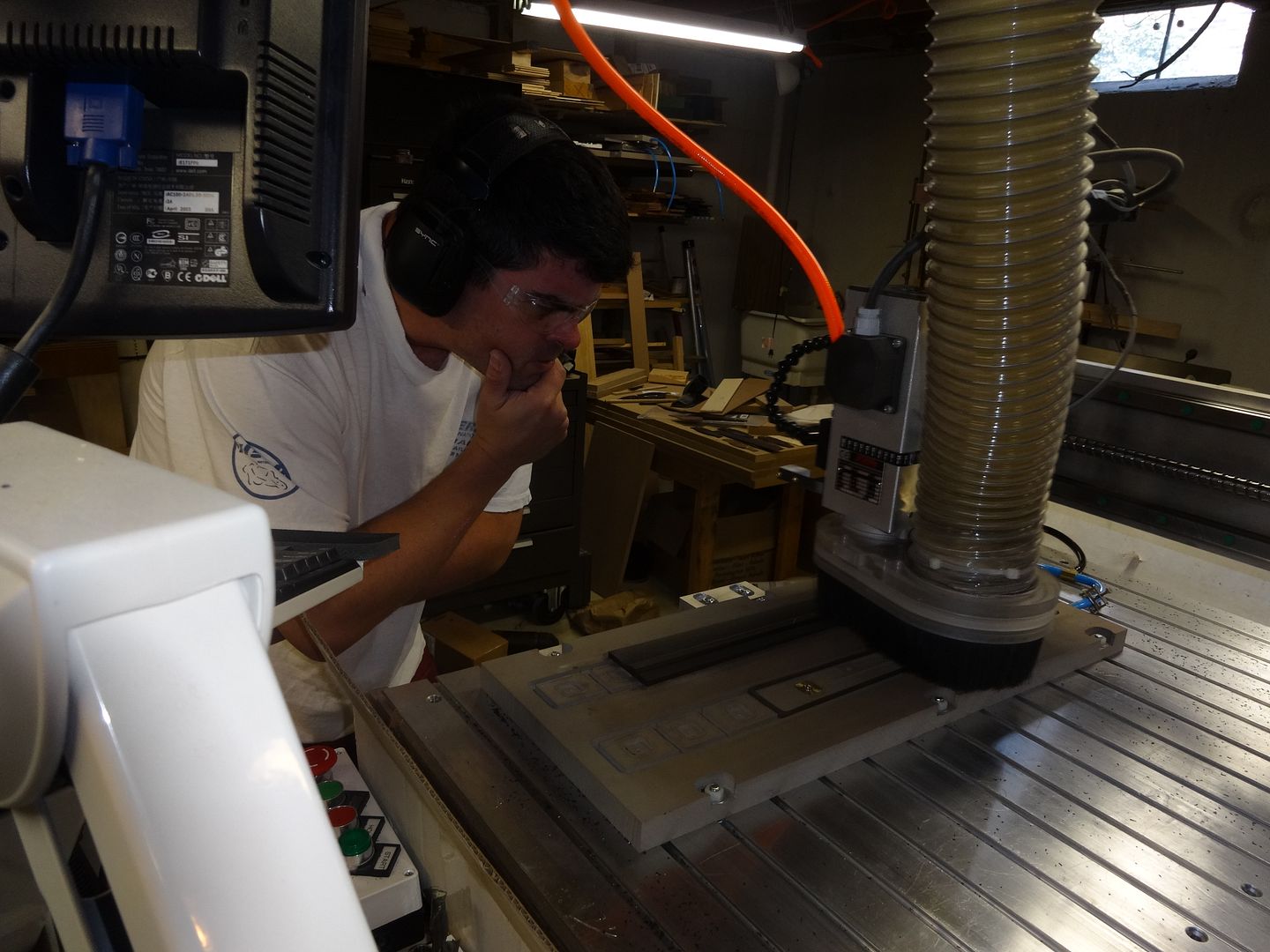Yep, it's really pretty easy, although there are plenty of fine points to discuss.
I slot the board by hand. Mark the fret positions along the lines of the low E and high E strings (not the edge of the board), and clamp a squared up wood block to the board to use as a saw guide, connecting the dots. Include marks for a zero fret and cut all the way through the board there, to cancel out any slight offset of the saw relative to the marks. You can slot after tapering the board this way, which can reduce waste in some cases
The neck width affects the "intensity" of the fan for a given scale difference. So if you want to do large scale differentials (like Mike's 27-29" baritone) a wider nut and bridge spacing can make it more comfortable. And note that if you put the perpendicular fret at 12, the nut will be more intensely angled than the bridge, because of the taper. I'd recommend around 7th to 9th fret perpendicular, and to avoid huge scale differentials.
To position the bridge, I use the compensation numbers from the StewMac fret calculator (low E from the longer scale, high E from the shorter scale) with a ruler laid along the string paths.
The bridge angle affects tone to some extent, because it causes you to pluck the low strings proportionally closer to the center and high strings proportionally closer to the bridge than normal, all things equal. Bruce Sexauer does very subtle fan frets, sometimes with the bridge as the perpendicular "fret" for this reason. Here's a thread with lots of discussion, where he explained the rationale http://www.acousticguitarforum.com/forums/showthread.php?t=325150
The angled frets also affect string bending. "Pull" bends work better at the lower fret positions, and "push" bends in the upper positions. So keep that in mind when considering how much string-to-edge space you want.
Bracing, IMO, should be as close to normal as you can get it while still getting good bridge-X overlap. Try to keep the X intersection at the center line, rather than offsetting it to the treble side too much. Twist the bridge to cancel out some of the angle. Treble wing tilted downward, bass wing tilted upward. The standard steel string bridge is already twisted in a sense, with the angled saddle slot
I also like to do asymmetrical body shapes to follow the bridge angle better. "Pinch" the treble side and "expand" the bass side, so the treble side X leg isn't so much longer. Here's a harp guitar, but regular should be somewhat similar (especially if you move the bridge up to 14 fret position so it doesn't need to be so wide to reach the X legs). Note, however, that dragging the bass side waist downward with the asymmetrical shape was a mistake... the waist should remain perpendicular to the center line for maximum comfort.
